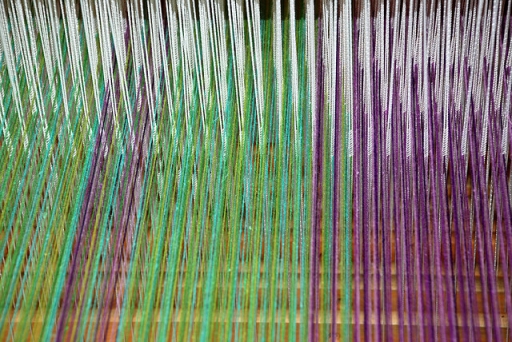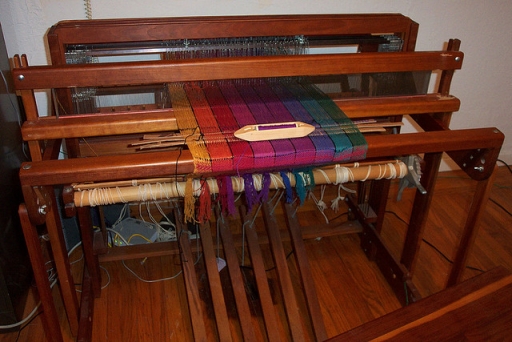Connecting Some Thinking Around Effective Professional Development
Context: The Warp and the Weft
Over the past month more than 20 English and francophone bloggers have contributed to an active and thoughtful conversation on Professional Development in the lives of Canadian educators. Each has, in their own way and from their own perspective, provided valuable insights into what makes for effective professional learning in the 21st Century.
We’ve heard from those in the early stages of their careers and those who have been on this journey for many years. We’ve heard from those actively immersed in classroom life and those who have taken on roles as administrators, teacher educators, researchers and academics. Individually, their reflections have been important and worthy of consideration but the real power in this thinking comes when we try to connect their ideas and insights. The collective wisdom that has been expressed has been compelling.
Several key points have captured our imaginations:
1) Ongoing learning and development is considered to be an essential part of the life of any professional;
2) Technologies, especially those that enable connection and collaboration, have opened up exciting possibilities that take us well beyond traditional “sit ‘n git” approaches to Professional Development;
3) Effective professional learning is iterative and ongoing—inspired and informed by the needs of our students but also by our own individual learning needs and questions of practice.
4) A healthy combination of personal and collective energy drives effective professional learning scenarios;
5) Professional development is most powerful when educators are given the opportunity to take an active, mindful role in framing their learning;
6) Professional development is transformed into professional learning when single events—speakers, books, videos—are enhanced by opportunities to reflect, discuss and apply new approaches, strategies and concepts.
Some of these ideas, when considered on their own, may seem like truisms. When taken as a whole, however, they point to a tension that is important as we become more attuned to both the opportunities and demands of professionalism.
A Metaphor for Putting Our Ideas in Context
Many metaphorical images have been used in the postings of our contributors—images that have encouraged us to think about professional learning in all its nuanced complexity. I would like to add one of my own—one that is based on a concept that, I believe, can tie so much of the conversation together: context!
In its most literal sense, the word text means something that is woven. Context—something that is woven together!
So many of those who have written here and elsewhere have insisted that professional learning becomes most effective when it is allowed to live and breathe within the context of practice—within classrooms, schools and local communities. It is the idea of context that allows educators to make connections between new practices and the reality of their day-to-day lives. It is the idea of context that respects individuality, promotes diversity and allows new ways of thinking to germinate and grow. It is the idea of context that allows us to make a shift from thinking about the work of educators as complicated to a recognition that it is, in fact, complex.
For me, an image that powerfully captures the challenges and opportunities inherent in the idea of context is the weaving loom.
The loom that holds the warp threads in perfect tension while the weft threads are shuttled back and forth to create a beautifully constructed tapestry. The loom that gathers multiple threads and weaves them together into a much stronger, more complex fabric. The loom that adds efficiency and power to the work of the weaver.
A loom, quite literally, is an enabler of context; it allows us to take disparate and unconnected ideas and weave them together into a meaningful creation. I’m wondering whether it is a metaphor that could help us to gather the threads of thinking that have been offered here over the past few weeks and focus our reflections in a different sort of way. Perhaps it’s the type of imagery that might allow us to consider how important it is for a certain degree of tension in our thinking about professional learning models. Perhaps it’s an image that presents us with a greater appreciation for a variety of approaches to the way that we frame the learning opportunities in which engage.
And perhaps it’s a metaphor that can see our ongoing learning as a way of contributing to a tapestry that extends well beyond our own personal contexts.
Instead of answers, however, I wanted to propose a few questions that might allow us to explore the metaphor of the weaving loom a little more deeply. Feel free to use these questions as a starting point from which to explore the imagery—on your own or throughout your PLN. Feel free to reword them to making them fit you own needs and context. I would be interested in hearing about the results!
Looming questions
What are some of the threads that you recognize in your own particular teaching/learning context? Which of these threads are most easily identified and which require more effort to identify?
What would you identify as the warp and the weft of your particular context? What threads are held in tension and which are threaded through that tension? Under what category would your own assumptions about teaching and learning fall? Tradition? New practices? Technology?
What are the processes in your particular context that act as the back and forth shuttling of the weft threads among the warp.
How does individuality and diversity fit into your thinking about context?
To what degree does the metaphor of the weaving loom resonate with your own thinking about professional development and learning? Where does the metaphor lead you?
This blog post is part of CEA’s focus on the state of Teacher PD in Canada, which is also connected to Education Canada Magazine’s Teachers as Learners theme issue and The Facts on Education fact sheet, What is Effective Teacher Professional Development? Please contact info@cea-ace.ca if you would like to contribute a blog post to this series.


